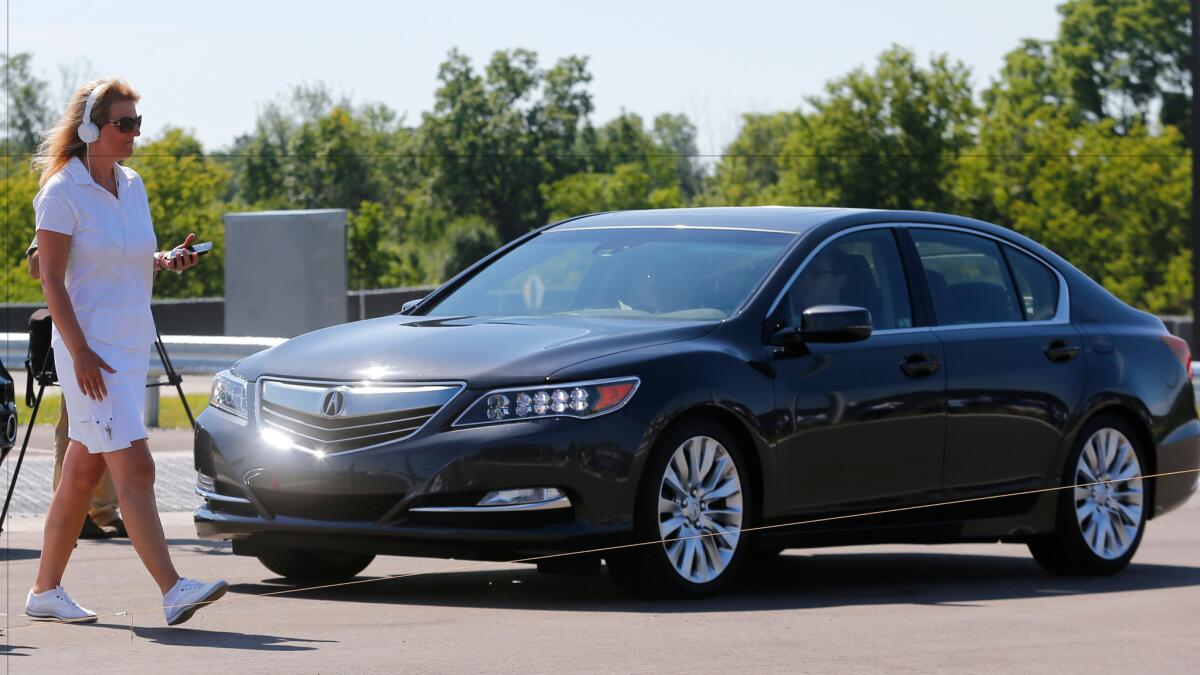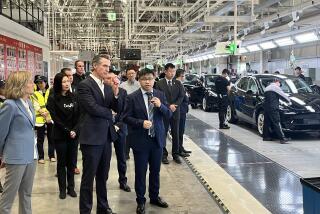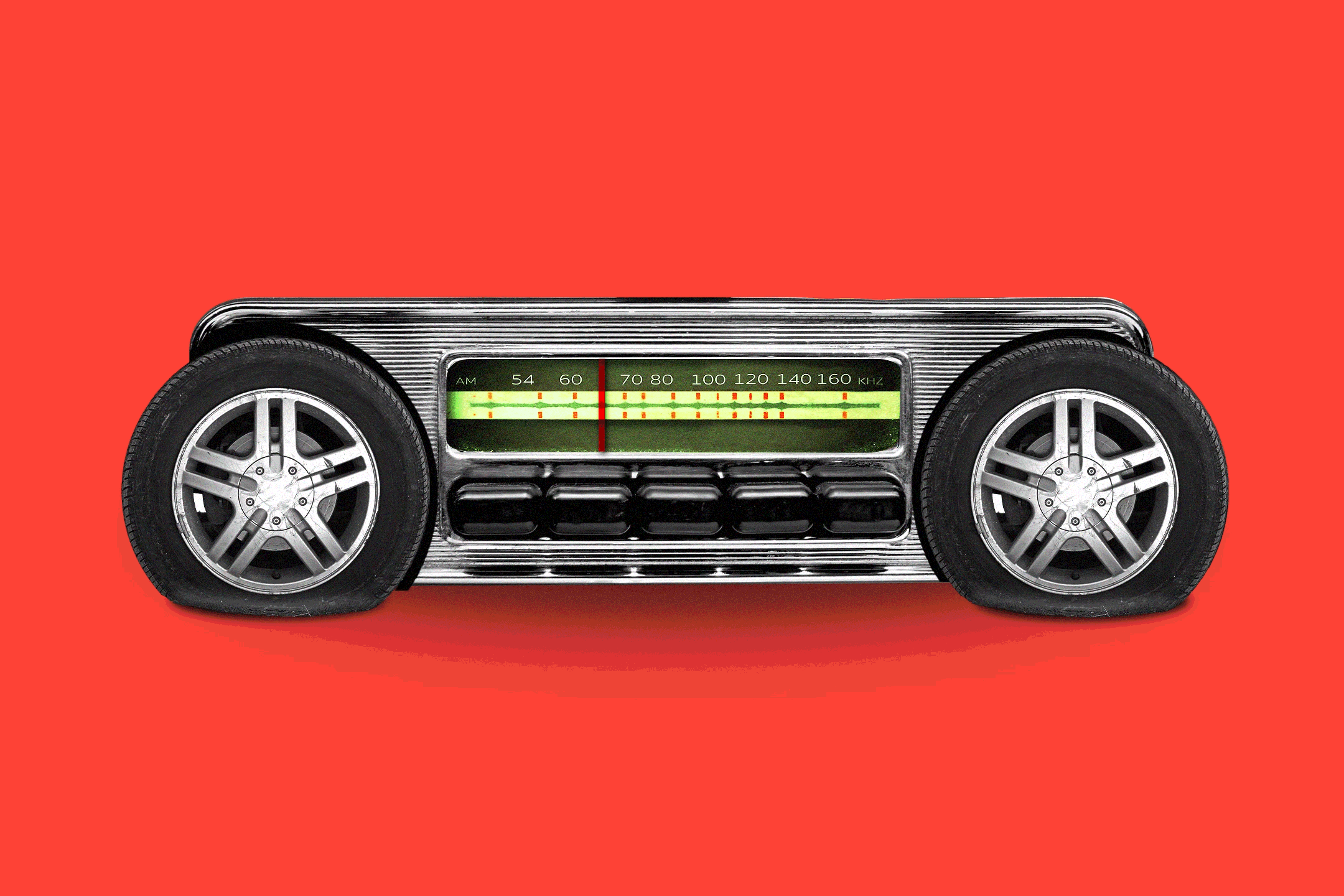Cars are ready to talk to one another — unless we use their airwaves for Wi-Fi

Cars that wirelessly talk to one another are finally ready for the road, creating the potential to dramatically reduce traffic deaths, improve the safety of self-driving cars and, perhaps, someday help solve traffic jams, automakers and government officials say.
But thereâs a big catch. The cable television and high-tech industries want to take away a large share of the radio airwaves the government dedicated for transportation in 1999 and use it instead for super-fast Wi-Fi service. Auto industry officials are fighting to hang on to as much of the spectrum as they can, saying they expect they will need it all for the new vehicle-to-vehicle communications, or V2V.
The government and the auto industry have spent more than a decade and more than $1 billion researching and testing V2V technology. The National Highway Traffic Safety Administration is expected to propose as early as next month that new cars and trucks come equipped with it. General Motors Co. isnât waiting for the proposal, saying it will include V2V in Cadillac CTS sedans before the end of the year.
The fight pits two government agencies against each other: the Federal Communications Commission, which regulates spectrum and sympathizes with wireless proponents, and the national traffic board, which regulates auto safety and has long made V2V a top priority. The White House, which is reviewing the traffic safety administrationâs proposal to require the technology in new cars, is caught between two of its goals: greater auto safety and faster wireless service.
With V2V, cars and trucks wirelessly transmit their locations, speed, direction and other information 10 times per second. That lets cars detect when another vehicle is about to run a red light, is braking hard or is coming around a blind turn in time for the driver or, in the case of self-driving cars, for the vehicle itself to take action to prevent a crash.
V2Vâs range is up to about 1,000 yards in all directions, even when sight is blocked by buildings or other obstacles. That means the technology could detect a potential collision before the driver can see the threat, unlike the sensors and cameras of self-driving cars that sense whatâs immediately around the vehicle.
The government estimates that V2V eventually could prevent or mitigate more than 80% of collisions that donât involve a driver impaired by drugs or alcohol.
Ultimately, self-driving cars also equipped with V2V may be the answer to traffic congestion because theyâll be able to synchronize their movements, industry officials say, so that they can merge seamlessly and travel in long, closely packed caravans at higher speeds. That would improve traffic flow and increase highway capacity. Cars also could communicate with traffic signals to make intersections more efficient.
âItâs these two technologies converging together that get you to the self-driving utopia that weâre all shooting for,â said Hilary Cain, Toyota Motor Corp.âs technology and innovation policy director.
Those who want more of the airwaves for Wi-Fi say that with self-driving cars on the horizon to eliminate human errors, the safety benefits of V2V are less important. They point out that it could be more than 20 years before the full benefits of V2V are realized because it takes decades for the automotive fleet to be completely replaced.
FCC Commissioner Jessica Rosenworcel has derided V2V as a turn-of-the-century technology, saying this year that itâs time to put the spectrum reserved for auto safety to better use.
As the airwaves grow more congested with traffic such as video chat and streaming, new, unreserved swaths of spectrum are seen as key to creating the âwider pipeâ needed to meet demand.
Automakers say theyâre willing to share the spectrum, but only if it wonât cause V2V signals to be dropped or slowed. The safety signals need to transmit 10 times faster than a typical cellphone call and be 100% reliable. The FCC plans to test proposals to share the airwaves.
Meanwhile, wireless supporters have petitioned the FCC for an emergency order to put off using V2V in the contested spectrum until cybersecurity standards are developed. Automakers contend that such safeguards already are built in.
ALSO
Will Hyundaiâs eco-friendly Ioniq woo hearts away from Prius?
Karma expands its California presence with an Irvine office lease
VW and dealers reach tentative settlement in emissions cheating scandal






